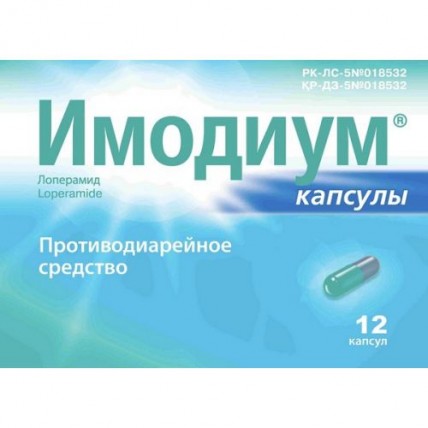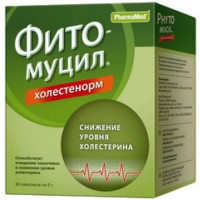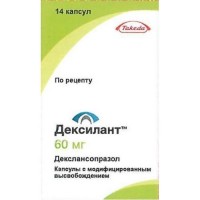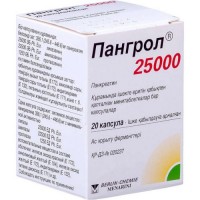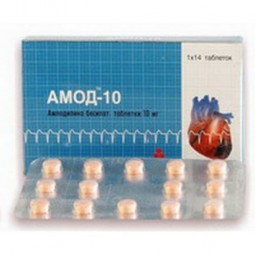Imodium 2 mg capsules 12s
- $14.20
The instruction for medical use of Imodium® medicine the Trade name of Imodium® the International unlicensed name Loperamide Dosage Form of the Capsule of 2 mg One capsule contains Structure: active agent - loperamide a hydrochloride of 2.0 mg, excipients: lactoses monohydrate of 127.0 mg, starch of corn 40.0 mg, talc of 9.0 mg, magnesium stearate of 2.0 mg. structure of a gelatin capsule: Cover: gland (III) oxide yellow (E 172), indigo carmine (E 132), titan dioxide (E 171), gelatin Body: gland (II, III) oxide black (E 172), indigo carmine (E 132), erythrosine (E127), the titan dioxide (E 171), gelatin the Description Solid gelatin capsules No. 4 with the body of dark gray color and a lid of green color. Contents of capsules – powder of white color. Pharmacotherapeutic group Digestive tract and metabolism. Antidiarrheal drugs. The drugs reducing motility of a GIT. Loperamide. The ATX A07DA03 code the Pharmacological Pharmacokinetics Absorption Loperamide properties in insignificant degree is soaked up in a digestive tract. It is exposed to important effect of the first passing in a liver, its biological efficiency is only about 0.3%. Distribution Loperamide mainly contacts receptors of a longitudinal muscular layer. The percent of linking with proteins of plasma, mainly, with albumine is approximately equal to 95%. Loperamide represents glucoprotein P substrate. Metabolism Loperamide is almost completely absorbed by a liver where he is metabolized, connects and brought with bile. N – oxidative demethylation represents the main way of metabolism of loperamide which, is generally mediated by CYP3A4 and CYP2C8. Because of strong effect of the first passing in a liver, concentration of loperamide in plasma remains very weak. Removal a loperamide Half-life period in a human body makes 11 hours, deviations – are possible from 9 to 14 o'clock. Drug is removed only with a chair. A pharmacodynamics of Imodium®, contacting opiate receptors in an intestines wall, suppresses release of acetylcholine and prostaglandins, reducing thereby a vermicular movement and increasing time of passing of contents on intestines. Raises a tone of an anal sphincter, reducing thereby incontinence of stool and desires by defecation. Indications - acute and chronic diarrhea - regulation of a chair at patients with ileostomy the Route of administration and doses Inside. Adult, including elderly: Acute diarrhea: an initial dose - 2 capsules (4 mg), accept further on 1 capsule (2 mg) after each act of defecation in case of a liquid chair (at most up to 8 mg/days). Chronic diarrhea: the initial dose - 2 capsules (4 mg) a day, this dose further is usually individually adjusted so that the frequency of a chair was 1-2 times a day that is usually reached at a maintenance dose from 1 to 4 capsules in day. Maximum daily dose. In acute and chronic diarrhea - 4 capsules (8 mg). At emergence of a normal chair or in the absence of a chair more than 12 h drug is cancelled. Side effects the Frequency of undesirable reactions is specified according to the following classification: very frequent (≥ 1/10), frequent (≥ 1/100 and & lt, 1/10), infrequent (≥ 1/1000 and & lt, 1/100), rare (≥ 1/10000 and & lt, 1/1000), very rare (& lt, 1/10000, including separate messages) Acute diarrhea Often: Disturbances from nervous system: the Disturbance headache from digestive tract: constipations, meteorism, nausea Infrequently: Disturbances from nervous system: Disturbance dizziness from digestive tract: dryness in a mouth, an abdominal pain, vomiting, discomfort in a stomach, upper abdomens pains, the Disturbance abdominal distension from skin and hypodermic fabrics: rash Chronic diarrhea Often: Disturbances from nervous system: Disturbance dizziness from digestive tract: constipations, meteorism, nausea Infrequently: Disturbances from nervous system: the Disturbance headache from digestive tract: dryness in a mouth, an abdominal pain, vomiting, discomfort in a stomach, dyspepsia. The undesirable reactions for the first time revealed during post-marketing observation at use of Imodium®: Very seldom: Disturbances from the immune system: reaction of hypersensitivity, anaphylactic reaction (including an acute anaphylaxis) and anaphylactoid reaction of Disturbance from nervous system: lacks of coordination of movements, decrease in level of consciousness, a muscular hypertension, a loss of consciousness, drowsiness, the Disturbance stupor from an organ of sight: the Disturbance miosis from digestive tract: intestinal impassability (including paralytic), megacolon (including toxic megacolon) Disturbances from skin and hypodermic fabrics: a Quincke's disease, bullous rash (including Stephens-Johnson's syndrome, a toxic epidermal necrolysis and a mnogoformny erythema), an itching, urticaria of Disturbance from kidneys and urinary tract: an urination delay the General disturbances and disturbances in the injection site: fatigue of the Contraindication - Hypersensitivity to loperamide and/or other components of drug - Imodium® cannot be used as drug of the first line: · at patients with the acute dysentery which is characterized by emergence of blood in Calais and high temperature · at patients with acute nonspecific ulcer colitis, · at patients with the bacterial coloenteritis caused by invasive microorganisms, including a salmonella, a shigella and a campylobacter, · at patients with the pseudomembranous colitis connected with use of antibiotics of a wide range. - intestinal impassability, megacolon or toxic megacolon (including if necessary to avoid suppression of a vermicular movement because of possible risk of serious complications) - children's age up to 18 years - the I trimester of pregnancy - the lactation period - to persons with hereditary intolerance of fructose, deficiency of Lapp-lactases enzyme, glucose galactose malabsorption. At development of a constipation, abdominal distension or intestinal impassability the use of Imodium® needs to be stopped urgently. With care: in a liver failure Medicinal interactions Loperamide is R-glycoprotein substrate. Combined use of loperamide (single dose of 16 mg) with quinidine or ritonaviry which are R-glycoprotein inhibitors led to 2-3-fold increase in concentration of loperamide in blood plasma. The clinical importance of this pharmacokinetic interaction with R-glycoprotein inhibitors at use of loperamide in the recommended doses is unknown. Combined use of loperamide (single dose of 4 mg) and an itrakonazol, CYP3A4 inhibitor and the R-glycoprotein, led to 3-4-fold increase in concentration of loperamide in blood plasma. CYP2C8 inhibitor, gemfibrozit, led to 2-fold increase in concentration of loperamide. The combination of an itrakonazol and a gemfibrozil led to 4-fold increase in peak levels of loperamide in blood plasma and to 13-fold increase in the general content of drug in blood plasma. This increase was not connected with influence on central nervous system according to psychomotor researches (i.e. value judgment of drowsiness and the test of replacement of symbols with figures). Combined use of loperamide (single dose of 16 mg) with ketokonazoly, CYP3A4 inhibitor and the R-glycoprotein, led to 5-fold increase in concentration of loperamide in blood plasma. This increase was not connected with strengthening of pharmakodinamichesky effects by results of a pupillometriya. Combined use with desmopressin for intake led to 3-fold increase in concentration of desmopressin in blood plasma, mainly because of delay of motility of digestive tract. It is supposed that drugs with similar pharmacological properties can enhance effect of loperamide, and the drugs accelerating passing of food on digestive tract can weaken its effect. Special instructions Accept medicine only according to the indications described in the instruction for medical use. Never exceed the recommended dose. Serious violations of cardiac performance, including the speeded-up or irregular heartbeat, were observed at patients who accepted high doses of loperamide. If you accepted a high dose of loperamide, it is necessary to see immediately behind council a doctor. Symptoms of overdose can include: increase in heart rate, irregular heartbeat, changes of reduction of heart (consequences of these symptoms can pose a threat for life), rigidity (rigidity) of muscles, in-coordinate movements, drowsiness, the complicated urination, the weakened breath. Treatment of diarrhea with hydrochloride loperamide use – only symptomatic. In all cases when the main etiology can be defined, if necessary it is necessary to appoint specific treatment. At patients with diarrhea, especially at children, the content of liquid and electrolytes can decrease. In such cases use of the corresponding water and electrolytic replacement therapy – the main method of treatment. In acute diarrhea if within 48 hours there does not occur clinical improvement, use of loperamide of a hydrochloride should be stopped, and the patient needs to recommend to consult with the attending physician. At the patients with AIDS receiving a loparemid a hydrochloride in connection with diarrhea at the first emergence of signs of intestinal impassability the therapy needs to be stopped. At the patients with AIDS and infectious bacterial or viral colitis receiving loperamide a hydrochloride separate messages about intestinal impassability with the increased risk of toxic megacolon were received. Though data on drug pharmacokinetics at patients with a liver failure are absent, loperamide the hydrochloride should be applied with care at such patients because of the lowered presistemny metabolism. With an abnormal liver function it is necessary to watch patients carefully for identification of signs of toxic impact on the central nervous system (CNS). Abuse or the wrong use of loperamide as substitute of opioids described at persons with opioid dependence. Messages about disturbance of warm activity, including lengthening of an interval of QT and the QRS complex and ventricular tachycardia on the pirouette type (torsades de pointes) were received at intake of loperamide in the dose exceeding recommended in the instruction for medical use and also at the wrong use or abuse (intended or inadvertent). It was in certain cases reported about a lethal outcome (see the section Overdose). Patients should not exceed the recommended dose of drug and the recommended reception duration. Before use in the below-mentioned cases it is recommended to consult with the doctor even if it is established that the patient has a syndrome of the angry intestines: - the age of the patient is more senior than 40 years, and from the moment of the last attack of a syndrome of the angry intestines there passed some time - the age of the patient is more senior than 40 years, and this time symptoms of a syndrome of the angry intestines differ - a recent enteromenia - a heavy constipation - nausea or vomiting - lack of appetite or degrowth of a body - complicated or urodynia - fever - a recent trip abroad. Pregnancy and the period of a lactation Though are not present certificates that loperamide the hydrochloride has teratogenic or embriotoksichesky properties, before its use during pregnancy, especially in the first trimester, it is necessary to estimate expected therapeutic advantage of rather potential danger. Loperamide in small amounts can get to breast milk of the person. Thus, it is not recommended to apply loperamide a hydrochloride during feeding by a breast. Features of influence of medicine on ability to run the vehicle or potentially dangerous mechanisms At treatment of diarrheal syndromes with use of loperamide of a hydrochloride can appear signs of fatigue, dizziness or drowsiness. In this regard, this drug is recommended to be used with care during the driving or work with mechanisms Overdose Symptoms (including relative overdose because of an abnormal liver function): central nervous system function suppression (a stupor, a lack of coordination of movements, drowsiness, a miosis, a muscular hypertension and oppression breath), a delay of urination and intestinal impassability can develop. Children are more susceptible to impact on central nervous system, than adults. At use of loperamide in the dose exceeding recommended (it is described at doses from 40 mg to 240 mg/days), disturbance of warm activity, including lengthening of an interval of QT and the QRS complex and ventricular tachycardia on the pirouette type (torsades de pointes) and other serious ventricular arrhythmias, cardiac arrest, faints was observed. It was in certain cases reported about a lethal outcome. Treatment: in case of overdose it is necessary to begin ECG monitoring on identifications of lengthening of an interval of QT. At emergence of symptoms of overdose from side of central nervous system as antidote it is possible to use Naloxonum. As duration of effect of loperamide is more, than at Naloxonum (1-3 hours), Naloxonum use is shown repeated. Thus, careful observation of the patient needs to be made at least within 48 hours for identification of possible oppression of central nervous system. The form of release and packing On 6, 10, 12, 15 or 16 capsules place in blister strip packaging from a film of polyvinylchloride and printing aluminum foil. On 1 or 2 planimetric packs together with the instruction for medical use in the state and Russian languages place in a cardboard pack. Not to apply a period of storage of 5 years after an expiration date. To Store storage conditions in the dry place at a temperature not above 25 °C. To store out of children's reach! Prescription status Without prescription the Producer Janssen-Silag, France. Camille Demoulen St., TSA 91003, 92787 of Issi Le Moulinl Sedex 9, France. Name and country of the owner of the registration certificate of LLC Johnson & Johnson, Russian Federation 121614, Moscow, Krylatskaya St., 17, building 2, ph. (495) 726-55-55 The name, the address and a contact information of the organization in the territory of the Republic of Kazakhstan, the accepting claim (offer) on quality of medicines from consumers and responsible for post-registration observation of safety of medicine: LLC Johnson & Johnson branch in Republic of Kazakhstan 050040, Republic of Kazakhstan, Almaty, Timiryazev St., 42, pavilion 23-A ph./fax: +7 (727) 356-88-11, +7 (727) 356-88-19
To develop
To develop
